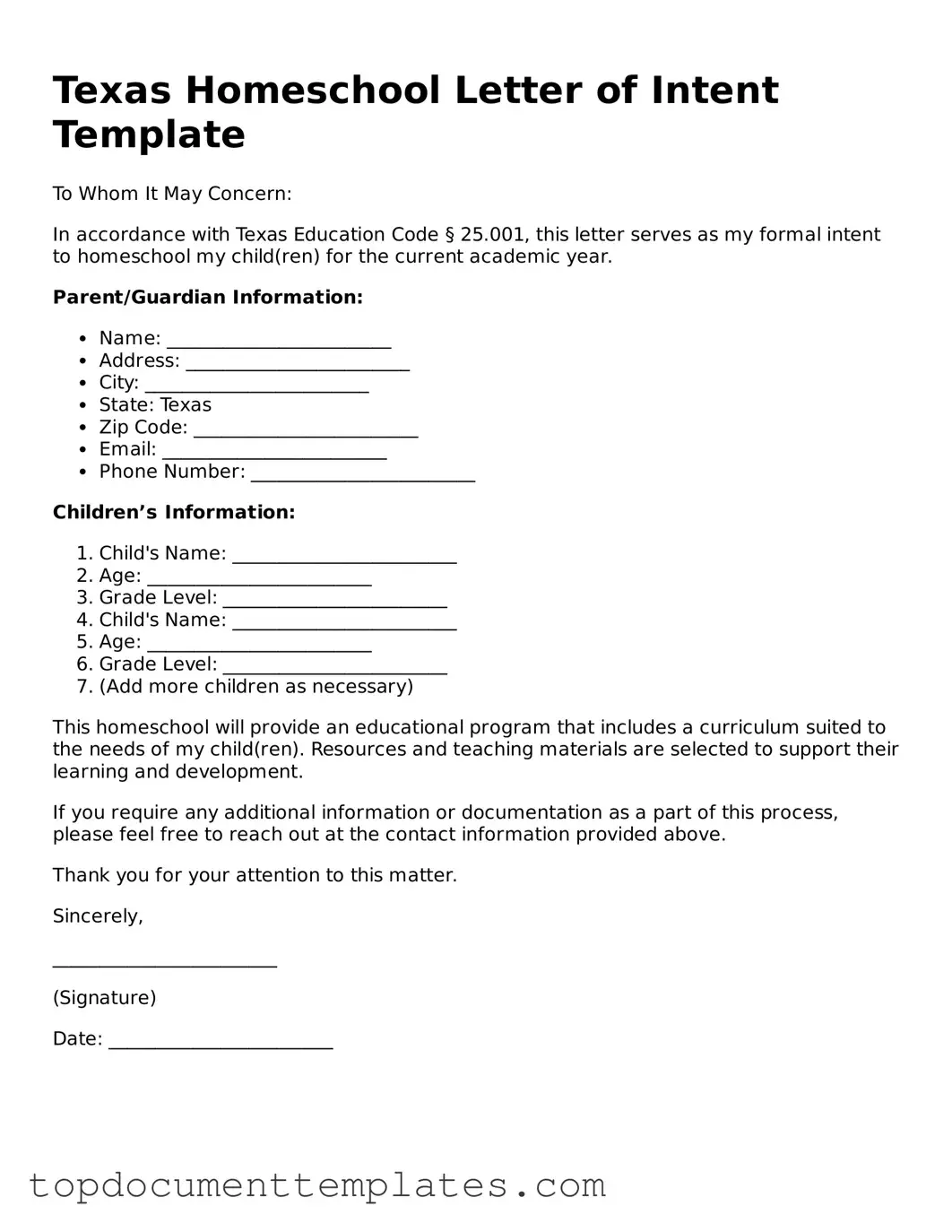Valid Homeschool Letter of Intent Form for Texas State
The Texas Homeschool Letter of Intent is a crucial document that parents must submit to officially notify the state of their decision to homeschool their children. This form outlines the family's intent to provide an educational experience outside of the traditional school system. Completing this form is an essential step in ensuring compliance with Texas homeschooling laws.
Take action today and fill out the form by clicking the button below.
Open This Form
